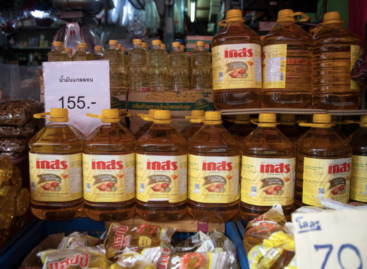Magazine: Polish puzzle waiting to be solved
From time to time the news spreads that Polish produce (apple, potato, etc.) is dumped on international markets, causing price reduction and driving Hungarian produce out of these markets. It is often claimed that Polish agri-food products have a competitive advantage over Hungarian ones. There are two explanations for this: one is that the VAT on food products is 27 percent in Hungary and 5-8 percent in Poland; the other is that the Polish agricultural sector is more viable, because Polish farmers and their organisations represent their interests better, they have better logistic systems and they are more willing to cooperate with each other. It is partly due to these reasons that the 2008-2009 financial and economic crisis didn’t affect Poland as dramatically as other countries such as Hungary.
Poland utilised WTO’s ‘Green Box’ subsidies already before the country’s EU accession to develop its logistic system, in order to improve the chances of Polish produce for entering foreign markets. After 2004 the country used the EU’s structural funds very efficiently to do away with the agri-food sector’s remaining disadvantages. It must also be noted that the Polish economy has been developing more dynamically than the Hungarian since 2004, and this made the country an attractive target for foreign investors. What is more, the Polish market itself is huge with its 38.6-million population. The conditions for agricultural production are excellent, there is great production potential and farmers aren’t as opposed to joining forces with one another than Hungarian producers, and this creates better chances for their produce in international markets.
Poland’s main export products are wheat, poultry meat, eggs, pork, milk and dairy products. About half of the country’s land is good for agricultural production. Mostly there are small farms but a rather high 12.6 percent of the active population work in the sector. However, agriculture’s contribution to the national economy is only 3.3 percent of the GDP. At the same time food industry plays an important role in the processing sector, creating great added value and thereby better chances for entering foreign markets. Hungary’s agri-food export to Poland got 2.57 times bigger in the last 15 years, but in the same period import from Poland multiplied by 7.75.
Referring back to the problem mentioned at the beginning of this article, it isn’t necessarily Polish apple or potato Hungarian consumers should be worried about. Very often Polish products ‘disappear’ in the food chain, appearing in the Hungarian market as ‘no name’ products. Hungary needs to develop not only its food industry, but also its logistic network and regional cooperations if we want Hungarian produce to enter foreign markets.
Related news
Related news
Corporate leaders’ commitment to sustainability at record level
According to the latest data from the K&H Sustainability Index,…
Read more >FAO food price index rose slightly in June due to higher prices of meat, dairy products and vegetable oils
The Food and Agriculture Organization of the United Nations (FAO)…
Read more >What can cause the price of a wine to increase tenfold?
There are fewer of them worldwide than the number of…
Read more >



